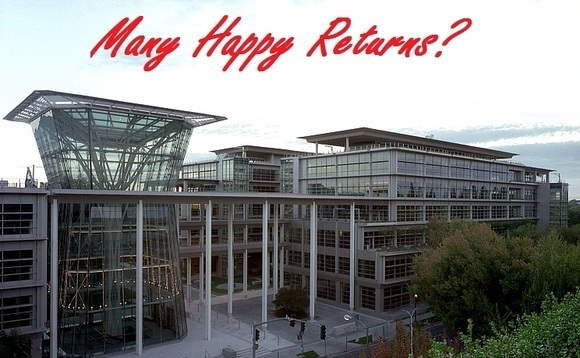
CalPERS PE data highlights MOR Asia

The California Public Employees Retirement System (CalPERS) has customarily acted as a bellwether for, and key influencer of, institutional support for private equity.
Now 20 years into its Alternative Investment Management (AIM) Program, CalPERS has also made substantial ongoing commitments to Asia Pacific private equity – over $4 billion to date, according to AVCJ Research figures. Its latest data shows that the performance of Asia Pacific funds, while apparently not dragged down by emerging-markets issues, is not matching the region's post-GFC perceived status as a growth haven.
Buyouts, growth and the Asia proposition
Asia Pacific funds featured neither among the absolute best nor the very worst of the performers on the CalPERS list – neither the zenith of Clearstone Venture Partners 1-B (1999) with 154.7% net IRR, nor the nadir of Aberdare II Annex Fund (2006) at -46.6% net IRR. Their actual performance can be seen on the table of CalPERS's investments.
CalPERS does seem to have increased its commitments to Asia Pacific over the past ten years, but many of its invested funds are 2006 or later vintages – which may actually have tended to depress the overall returns from the region. Many of the most significant funds for Asia Pacific were raised after 2007, and are therefore still weighed down by the J-curve effect.
At least one prominent LP, though not in the pensions sector, pointed out to AVCJ that CalPERS's exposure to Asia Pacific is predominantly through mega-buyout funds. This could be a consequence of its propensity to make larger commitments – though CalPERS has committed as little as $20 million in Baring India Private Equity Fund III, for instance.
CalPERS's exposure to the most attractive growth capital markets, China and India, is chiefly through exposure in larger pan-regional funds rather than single-country vehicles. SAIF Partners III with a net IRR of 18.2% and Carlyle Asia Growth Partners IV, a 2008 fund that has already achieved some 70% IRR, are honorable exceptions, but the overall portfolio could be seen to under-represent some of the most appealing investment theses for private equity investors right now.
The same LP also confirmed growing doubts among global investors about the prospects for multi-billion vehicles in the region: "Many LPs are becoming skeptical about whether such large amounts of capital can be put into productive use in Asia." Nonetheless, the multiples from earlier vintages of Asian Pacific funds certainly demonstrate why CalPERS might have been confident in its strategy – 29.4% IRR from Newbridge Asia III, for instance.
Concerns over value
Some of the results do suggest that current market talk about the best-performing sub-asset classes and theses – and the less-favored ones – might have to be re-examined in the light of actual performances. The suggestion that the independent fund of funds model in Asia Pacific is both flawed and congested, and liable to see significant consolidation in the medium term may need some revision in the light of the 19% net IRR achieved by Asia Alternatives Capital Partners II, a 2008 fund that presumably may see even better performance once J-curve effects are mitigated. Also, apparent LP skepticism against buyout funds might have to be qualified with reference to the performance of funds like Carlyle Japan Partners, at 34.5%.
One doubt lingers over the returns figures, though, as another fund-of-funds LP points out. While allowing that the performance overall looks reasonable, the LP notes that a fair proportion of the value is coming, not from actual realizations, but from so-called ‘remaining value.' And this is the case not just for the more recent funds, which in many cases naturally are yet to see significant realizations, but even some dating back as early as 2000.
The real value of the assets, and the real performance of the funds, is therefore still somewhat a matter of conjecture, until actual cash returns are realized. In this context, the LP avers, there is a tendency to overvalue assets, especially when clear mark-to-market benchmarks are not available. And in particular, final realized values can be highly dependent on the performance of the IPO markets – especially for China and India.
Comparisons with other LPs
Other major pension fund investors have broadly committed to similar vehicles to CalPERS and seen similar net IRR results. California Teachers' Retirement System (CalSTRS), for one, saw only 0.3 percentage points difference in performance from Affinity Asia Pacific Fund III. However, some peers have exposure in well-regarded vehicles that CalPERS lacks, though not always with performance numbers to match, many of these in the smaller, more regional funds where CalPERS is under-represented.
Both CalSTRS and Washington State Investment Board, for example, have committed to the FountainVest China Growth Capital Fund, which so far has seen -4.94% IRR off a late 2008 vintage. The University of Texas Investment Management Company (UTIMCO), as of mid-2009, saw a 6.25% IRR from the 2007 vintage growth-oriented Actis India 3 fund, and 14.29% from the same vintage's NewMargin Growth Fund. Most of UTIMCO's Asian growth capital commitments, indeed, have seen positive IRRs above 10%. CalSTRS has also consistently backed Navis Capital Partners, with Navis Asia Fund IV returning 13.31%, and Navis Asia Fund V returning 7.16%.
Performance and expectations for Asia
Overall, CalPERS's figures do not show a significant outperformance from Asia Pacific funds to justify a bet taken against emerging markets risk. Some funds indeed have performed well, especially those from earlier in the decade. Others have done more poorly – but mostly following the trends in the whole industry worldwide, somewhat exacerbated by Asia's newly-fashionable status around the mid-2000s. Whatever the reality of emerging markets risk, it has not depressed CalPERS's Asian returns.
An LP looking to CalPERS's performance figures for guidance on whether to commit to Asia Pacific might not come away inspired, but nor should they be especially concerned. However, the big question of whether Asia Pacific is truly going to deliver private equity returns commensurate with its sustained macro growth post the GFC will have to wait for an answer until another series of CalPERS returns – perhaps ones that even reflect post-2008 vintages, rather than the capital overhang of the immediate pre-Crisis period.
Latest News
Asian GPs slow implementation of ESG policies - survey
Asia-based private equity firms are assigning more dedicated resources to environment, social, and governance (ESG) programmes, but policy changes have slowed in the past 12 months, in part due to concerns raised internally and by LPs, according to a...
Singapore fintech start-up LXA gets $10m seed round
New Enterprise Associates (NEA) has led a USD 10m seed round for Singapore’s LXA, a financial technology start-up launched by a former Asia senior executive at The Blackstone Group.
India's InCred announces $60m round, claims unicorn status
Indian non-bank lender InCred Financial Services said it has received INR 5bn (USD 60m) at a valuation of at least USD 1bn from unnamed investors including “a global private equity fund.”
Insight leads $50m round for Australia's Roller
Insight Partners has led a USD 50m round for Australia’s Roller, a venue management software provider specializing in family fun parks.








